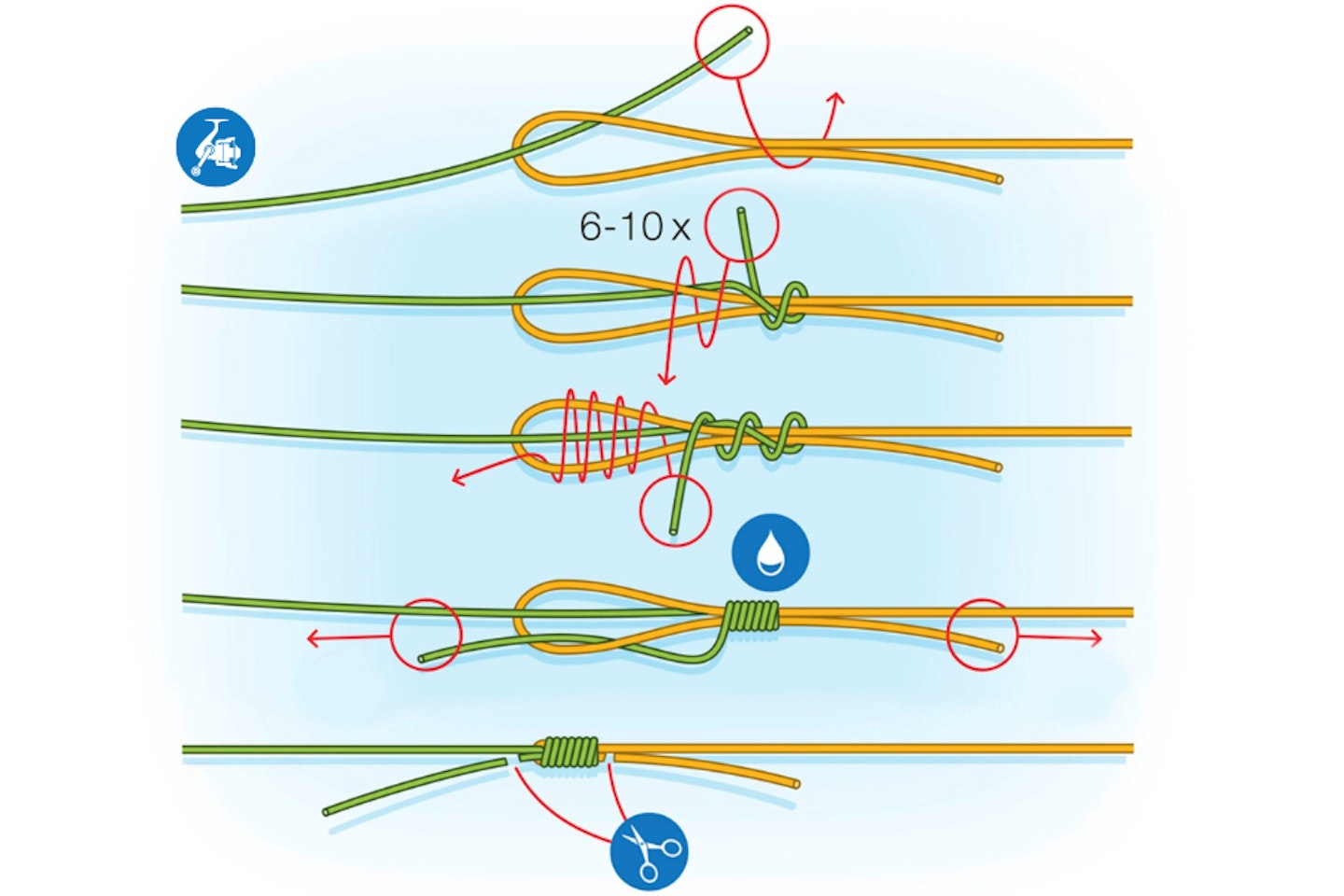Shockleaders play a crucial role in various fishing setups, especially for anglers targeting larger fish or casting at longer distances. They are used across different fishing styles, from carp and coarse fishing to sea fishing, and serve to protect your mainline from snapping under the strain of a powerful fish or a long cast.
In this article, I will guide you through tying what I consider the best shockleader knot for beginners. This knot is straightforward to tie and exceptionally strong, ensuring your setup is reliable when reeling in a big fish. Before we dive in, let’s explore what a shockleader is.
What is a shockleader?
A shockleader is a short segment of line attached to the end of your mainline. Typically made from a heavier line, it’s purpose is to absorb the shock that comes from a large fish or a long cast. By incorporating this material, you can use a thinner mainline on your reel, which reduces friction on the rod guides and enables longer, smoother casts.
Shockleaders are versatile and widely used, particularly in carp, coarse and sea fishing. In sea fishing, they protect the mainline from breaking due to the force or abrasion of a big fish or from casting heavy leads from the shore. In coarse and carp fishing, shockleaders protect the mainline when launching heavy leads or feeders.
The best shockleader knot
There are various shockleader knots, but I believe the 'Albright knot' is the best choice for connecting a shockleader to your mainline. It is simple to tie, boasts great strength and the knot is small allowing it to pass through the rod rings easily.
To start, thread your mainline through the rod rings and trim the shockleader material. Ideally, you want enough shockleader on the reel so that a few turns are on the reel when the fish is under the rod tip. A good rule of thumb is to use three times the length of your rod; for instance, with a 12ft rod, you would need 36ft, or 11m, of shockleader material. This knot is suited to both braided and monofilament lines.
Tying the shockleader to your mainline
-
Double the end of the shockleader to form a loop, then pass the end of the mainline through the loop of the shockleader.
-
Wrap the mainline around the doubled shockleader line six to ten times.
-
Thread the end of the mainline through the loop of the shockleader line.
-
Tighten the knot by pulling both lines and ensure you moisten the knot thoroughly.
-
Trim off the tag ends, creating a neat compact knot that can pass through the rod guides.
A SHOCKLEADER IS ESSENTIAL FOR DISTANCE FEEDER FISHING, CHECK OUT OUR GUIDE THE BEST DISTANCE FEEDER FISHING RODS

